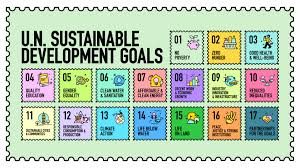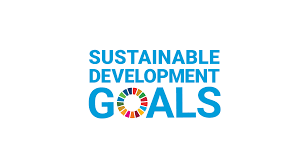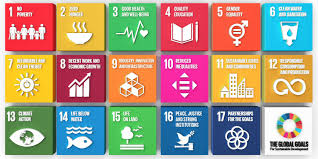The United Nations Sustainable Development Goals (SDGs): A Global Call to Action
The United Nations Sustainable Development Goals (SDGs) represent a universal call to action to end poverty, protect the planet, and ensure prosperity for all by 20
Adopted by all United Nations Member States in 2015 as part of the 2030 Agenda for Sustainable Development, the 17 SDGs address a wide range of global challenges, from climate change and environmental degradation to poverty and inequality.
Key Objectives of the SDGs
Each of the 17 SDGs has specific targets that are interconnected and aim to tackle pressing issues facing humanity. Some of the key objectives include:
- No Poverty: End poverty in all its forms everywhere.
- Zero Hunger: End hunger, achieve food security and improved nutrition, and promote sustainable agriculture.
- Good Health and Well-Being: Ensure healthy lives and promote well-being for all at all ages.
- Quality Education: Ensure inclusive and equitable quality education and promote lifelong learning opportunities for all.
- Gender Equality: Achieve gender equality and empower all women and girls.
The Importance of the SDGs
The SDGs are crucial for creating a more sustainable, equitable, and prosperous world. By addressing interconnected issues such as poverty, inequality, climate change, and environmental degradation, the goals provide a roadmap for governments, businesses, civil society, and individuals to work together towards a better future for all.
Challenges Ahead
While progress has been made towards achieving the SDGs since their adoption in 2015, significant challenges remain. Issues such as lack of funding, political will, conflicts, natural disasters, and the ongoing COVID-19 pandemic pose obstacles to realizing the goals by 20
It is essential for stakeholders at all levels to redouble their efforts and collaborate effectively to overcome these challenges.
Joining Forces for a Sustainable Future
As individuals, communities, organizations, and nations around the world come together to support the implementation of the SDGs, we have an opportunity to create lasting positive change. By aligning our actions with the principles of sustainability and inclusivity embodied in the SDGs, we can build a more resilient world that leaves no one behind.
Let us embrace this global call to action and work collectively towards achieving the United Nations Sustainable Development Goals by 20
Together, we can create a future where prosperity is shared by all and our planet thrives for generations to come.
Understanding the United Nations Sustainable Development Goals: Key Questions and Answers
- What are the United Nations Sustainable Development Goals (SDGs)?
- How many SDGs are there?
- When were the SDGs adopted by all United Nations Member States?
- What is the purpose of the SDGs?
- Why are the SDGs important?
- What are some examples of specific SDG targets?
- What challenges exist in achieving the SDGs?
- How can individuals contribute to the realization of the SDGs?
- Are there any partnerships or initiatives supporting the implementation of the SDGs?
What are the United Nations Sustainable Development Goals (SDGs)?
The United Nations Sustainable Development Goals (SDGs) are a set of 17 global objectives adopted by all United Nations Member States in 2015 as part of the 2030 Agenda for Sustainable Development. These goals serve as a universal call to action to address pressing challenges such as poverty, inequality, climate change, and environmental degradation. Each SDG has specific targets aimed at promoting prosperity, protecting the planet, and ensuring well-being for all. By providing a comprehensive framework for sustainable development, the SDGs guide efforts at local, national, and international levels to create a more equitable and sustainable future for people and the planet.
How many SDGs are there?
The United Nations Sustainable Development Goals (SDGs) consist of a total of 17 goals that were adopted by all United Nations Member States in 2015 as part of the 2030 Agenda for Sustainable Development. These goals cover a wide range of interconnected issues, including poverty, hunger, health, education, gender equality, and environmental sustainability. Each SDG has specific targets aimed at addressing global challenges and fostering a more equitable and sustainable future for all.
When were the SDGs adopted by all United Nations Member States?
The Sustainable Development Goals (SDGs) were adopted by all United Nations Member States in 2015 as part of the 2030 Agenda for Sustainable Development. This landmark agreement signifies a global commitment to address pressing challenges such as poverty, inequality, climate change, and environmental degradation through collective action and cooperation. The adoption of the SDGs marked a significant milestone in international efforts to create a more sustainable and equitable world for present and future generations.
What is the purpose of the SDGs?
The purpose of the Sustainable Development Goals (SDGs) is to provide a comprehensive and universal framework for addressing global challenges and promoting sustainable development worldwide. By setting specific targets across 17 interconnected goals, the SDGs aim to end poverty, protect the planet, and ensure prosperity for all. These goals serve as a roadmap for governments, organizations, and individuals to work together towards building a more equitable, resilient, and prosperous future for everyone. The SDGs encourage collaboration and action at local, national, and international levels to create positive change that benefits both current and future generations.
Why are the SDGs important?
The Sustainable Development Goals (SDGs) are important because they provide a comprehensive framework for addressing global challenges and promoting sustainable development worldwide. By targeting key issues such as poverty, inequality, climate change, and environmental degradation, the SDGs offer a roadmap for creating a more equitable, prosperous, and environmentally sustainable future for all. These goals serve as a universal call to action that encourages collaboration among governments, businesses, civil society, and individuals to work together towards achieving a better world for present and future generations. Embracing the SDGs means committing to building a more inclusive and resilient world where no one is left behind, and where the well-being of people and the planet are prioritized.
What are some examples of specific SDG targets?
When exploring the United Nations Sustainable Development Goals (SDGs) and their specific targets, it is essential to consider a diverse range of objectives aimed at addressing global challenges comprehensively. Examples of specific SDG targets include ending poverty in all its forms (Goal 1), ensuring access to quality education for all (Goal 4), promoting gender equality and empowering women and girls (Goal 5), and taking urgent action to combat climate change and its impacts (Goal 13). These targets serve as guiding principles for governments, organizations, and individuals to work collaboratively towards achieving a more sustainable and equitable world by 2030.
What challenges exist in achieving the SDGs?
Achieving the United Nations Sustainable Development Goals (SDGs) presents a myriad of challenges on a global scale. Some of the key obstacles include inadequate funding and resources, lack of political will and commitment from governments, ongoing conflicts and instability in certain regions, natural disasters that disrupt progress, and the unprecedented challenges posed by the COVID-19 pandemic. These challenges underscore the need for concerted efforts and collaboration among stakeholders to address systemic issues such as poverty, inequality, climate change, and environmental degradation. Overcoming these hurdles requires innovative solutions, increased cooperation, and sustained dedication to ensure that the SDGs are achieved by 2030.
How can individuals contribute to the realization of the SDGs?
Individuals play a crucial role in contributing to the realization of the United Nations Sustainable Development Goals (SDGs) through their everyday actions and choices. By raising awareness about the SDGs within their communities, advocating for sustainable practices, supporting ethical businesses, volunteering for relevant causes, and engaging in responsible consumption habits, individuals can make a significant impact. Additionally, participating in local initiatives, educating themselves about global challenges, and holding policymakers accountable for implementing policies that align with the SDGs are effective ways for individuals to contribute to a more sustainable and equitable world. Each person’s commitment to positive change can collectively drive progress towards achieving the SDGs by 2030.
Are there any partnerships or initiatives supporting the implementation of the SDGs?
Many partnerships and initiatives have been established to support the implementation of the United Nations Sustainable Development Goals (SDGs). These collaborations bring together governments, businesses, civil society organizations, academia, and other stakeholders to work towards achieving the targets set out in the SDGs. Examples of such partnerships include the UN Global Compact, which encourages businesses to align their operations and strategies with the SDGs, and the Sustainable Development Solutions Network (SDSN), which mobilizes scientific and technical expertise to promote sustainable development. These partnerships play a crucial role in driving progress towards a more sustainable and equitable future for all.





